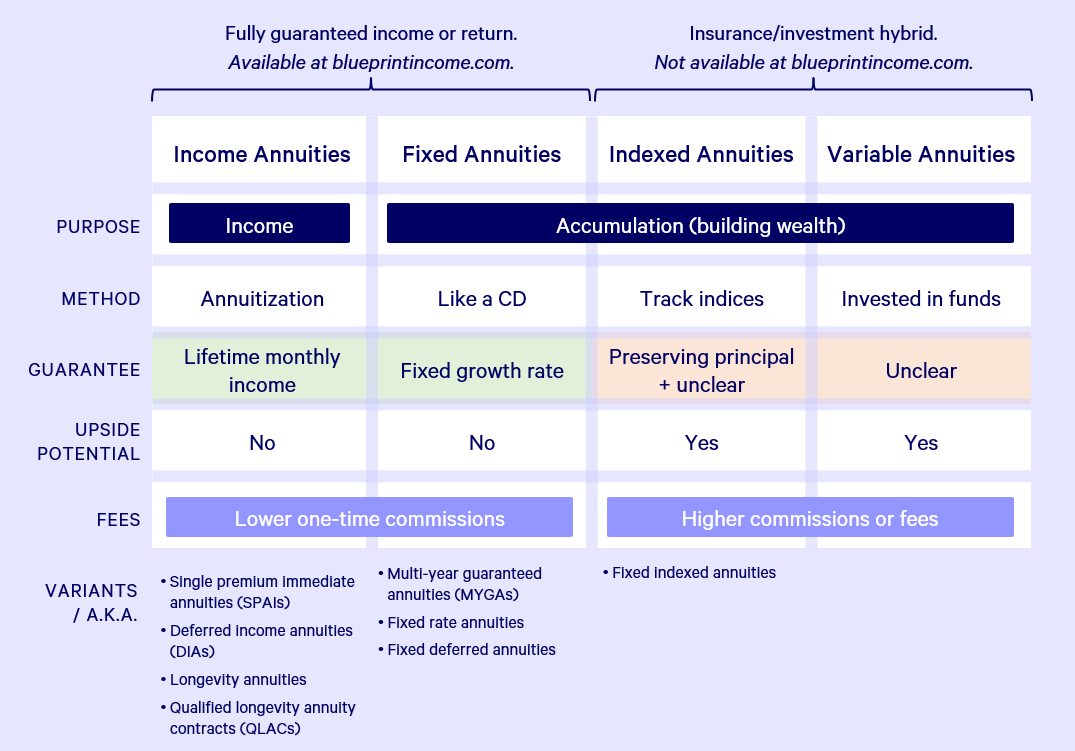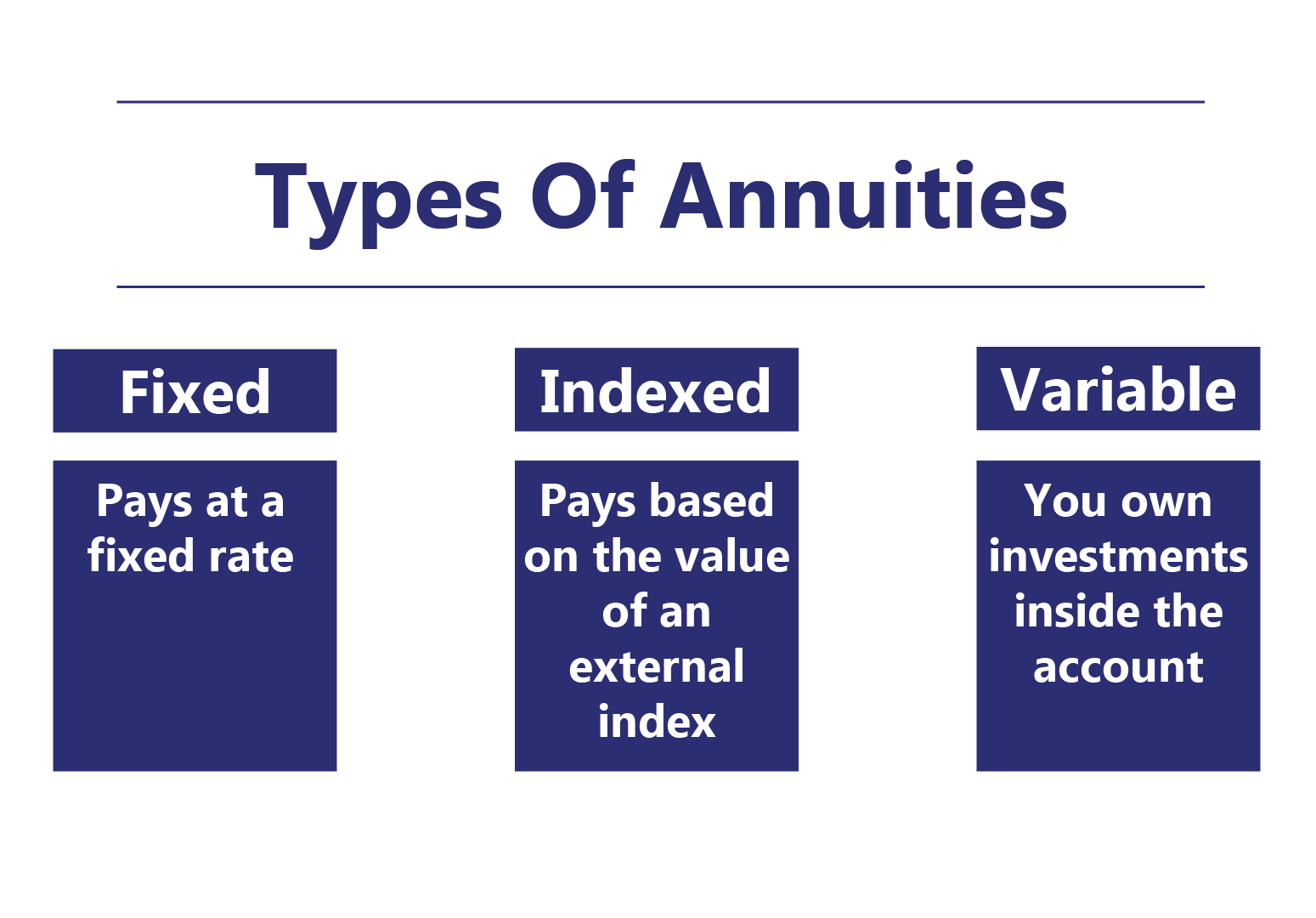Featured
Table of Contents
The settlement could be spent for growth for an extended period of timea solitary costs postponed annuityor spent for a short time, after which payment beginsa single premium immediate annuity. Single premium annuities are typically funded by rollovers or from the sale of a valued asset. A flexible premium annuity is an annuity that is meant to be moneyed by a series of payments.
Owners of fixed annuities understand at the time of their purchase what the worth of the future cash circulations will certainly be that are generated by the annuity. Undoubtedly, the number of capital can not be known ahead of time (as this relies on the agreement owner's lifespan), but the assured, taken care of rates of interest at least provides the owner some degree of assurance of future revenue from the annuity.
While this distinction appears basic and simple, it can substantially impact the value that a contract owner inevitably stems from his or her annuity, and it creates substantial unpredictability for the agreement owner - Fixed annuities vs market risk. It also usually has a product effect on the degree of fees that a contract proprietor pays to the releasing insurance provider
Fixed annuities are typically made use of by older financiers that have actually restricted properties yet who intend to offset the threat of outlasting their properties. Fixed annuities can work as an effective device for this objective, though not without specific disadvantages. In the instance of instant annuities, when a contract has actually been acquired, the contract owner relinquishes any kind of and all control over the annuity possessions.
Understanding Fixed Index Annuity Vs Variable Annuity A Comprehensive Guide to Investment Choices Breaking Down the Basics of Investment Plans Advantages and Disadvantages of Different Retirement Plans Why Choosing the Right Financial Strategy Can Impact Your Future How to Compare Different Investment Plans: How It Works Key Differences Between Different Financial Strategies Understanding the Rewards of Long-Term Investments Who Should Consider Strategic Financial Planning? Tips for Choosing Fixed Vs Variable Annuity FAQs About Fixed Index Annuity Vs Variable Annuities Common Mistakes to Avoid When Choosing a Financial Strategy Financial Planning Simplified: Understanding Your Options A Beginner’s Guide to Retirement Income Fixed Vs Variable Annuity A Closer Look at Indexed Annuity Vs Fixed Annuity
For instance, a contract with a normal 10-year abandonment period would bill a 10% abandonment cost if the agreement was surrendered in the first year, a 9% abandonment cost in the second year, and so on until the abandonment cost gets to 0% in the agreement's 11th year. Some deferred annuity contracts include language that permits for little withdrawals to be made at numerous periods throughout the abandonment period without charge, though these allocations generally come with a price in the form of reduced surefire passion prices.
Equally as with a fixed annuity, the owner of a variable annuity pays an insurance policy company a swelling amount or collection of settlements in exchange for the pledge of a series of future payments in return. But as pointed out above, while a taken care of annuity grows at a guaranteed, constant rate, a variable annuity grows at a variable rate that relies on the efficiency of the underlying investments, called sub-accounts.
During the build-up stage, assets bought variable annuity sub-accounts grow on a tax-deferred basis and are exhausted only when the contract proprietor takes out those incomes from the account. After the accumulation stage comes the earnings phase. Gradually, variable annuity assets need to theoretically increase in value up until the agreement proprietor determines she or he wish to start withdrawing money from the account.
The most substantial issue that variable annuities commonly present is high price. Variable annuities have numerous layers of fees and expenses that can, in accumulation, produce a drag of up to 3-4% of the agreement's value each year. Below are the most usual fees related to variable annuities. This expense compensates the insurance company for the risk that it assumes under the terms of the agreement.
M&E cost charges are determined as a percent of the agreement value Annuity providers hand down recordkeeping and various other management prices to the contract proprietor. This can be in the form of a level annual fee or a percent of the contract value. Management fees may be consisted of as part of the M&E threat charge or may be evaluated individually.
These fees can vary from 0.1% for easy funds to 1.5% or more for proactively handled funds. Annuity agreements can be customized in a variety of means to serve the particular demands of the agreement owner. Some common variable annuity cyclists consist of guaranteed minimum accumulation advantage (GMAB), guaranteed minimum withdrawal benefit (GMWB), and guaranteed minimum earnings benefit (GMIB).
Analyzing Variable Annuity Vs Fixed Indexed Annuity A Comprehensive Guide to Annuities Fixed Vs Variable What Is the Best Retirement Option? Benefits of Fixed Index Annuity Vs Variable Annuity Why Choosing the Right Financial Strategy Matters for Retirement Planning How to Compare Different Investment Plans: A Complete Overview Key Differences Between Indexed Annuity Vs Fixed Annuity Understanding the Rewards of Fixed Income Annuity Vs Variable Annuity Who Should Consider Variable Vs Fixed Annuity? Tips for Choosing the Best Investment Strategy FAQs About Fixed Index Annuity Vs Variable Annuities Common Mistakes to Avoid When Planning Your Retirement Financial Planning Simplified: Understanding Your Options A Beginner’s Guide to Smart Investment Decisions A Closer Look at Fixed Annuity Vs Variable Annuity
Variable annuity payments provide no such tax obligation deduction. Variable annuities often tend to be very inefficient cars for passing wealth to the future generation because they do not take pleasure in a cost-basis modification when the initial agreement proprietor dies. When the owner of a taxed investment account passes away, the cost bases of the financial investments kept in the account are gotten used to show the marketplace costs of those investments at the time of the owner's death.
Therefore, beneficiaries can inherit a taxed financial investment portfolio with a "clean slate" from a tax obligation point of view. Such is not the situation with variable annuities. Investments held within a variable annuity do not obtain a cost-basis modification when the initial owner of the annuity passes away. This indicates that any built up latent gains will certainly be passed on to the annuity proprietor's heirs, together with the connected tax obligation worry.

One considerable concern connected to variable annuities is the potential for problems of interest that might exist on the component of annuity salespeople. Unlike an economic advisor, that has a fiduciary duty to make investment choices that benefit the client, an insurance policy broker has no such fiduciary responsibility. Annuity sales are very financially rewarding for the insurance experts that offer them due to high in advance sales payments.
Many variable annuity agreements consist of language which puts a cap on the percent of gain that can be experienced by particular sub-accounts. These caps prevent the annuity owner from completely getting involved in a section of gains that might or else be enjoyed in years in which markets create considerable returns. From an outsider's perspective, it would certainly appear that financiers are trading a cap on investment returns for the abovementioned guaranteed floor on investment returns.
Decoding How Investment Plans Work Key Insights on Variable Annuity Vs Fixed Indexed Annuity What Is the Best Retirement Option? Pros and Cons of Fixed Income Annuity Vs Variable Annuity Why Choosing the Right Financial Strategy Is Worth Considering Fixed Vs Variable Annuities: A Complete Overview Key Differences Between Different Financial Strategies Understanding the Key Features of Fixed Annuity Vs Variable Annuity Who Should Consider Strategic Financial Planning? Tips for Choosing the Best Investment Strategy FAQs About Planning Your Financial Future Common Mistakes to Avoid When Choosing a Financial Strategy Financial Planning Simplified: Understanding Your Options A Beginner’s Guide to Smart Investment Decisions A Closer Look at How to Build a Retirement Plan
As noted over, surrender costs can seriously limit an annuity owner's capability to relocate assets out of an annuity in the early years of the contract. Further, while the majority of variable annuities allow agreement owners to withdraw a specified amount during the accumulation phase, withdrawals beyond this amount commonly lead to a company-imposed charge.
Withdrawals made from a fixed rates of interest financial investment alternative might likewise experience a "market value change" or MVA. An MVA changes the value of the withdrawal to reflect any kind of changes in interest rates from the time that the cash was spent in the fixed-rate choice to the time that it was withdrawn.

On a regular basis, even the salesmen that market them do not completely understand just how they function, and so salesmen often victimize a purchaser's feelings to offer variable annuities instead of the qualities and viability of the items themselves. Our team believe that financiers should fully comprehend what they own and just how much they are paying to possess it.
Nonetheless, the same can not be said for variable annuity possessions kept in fixed-rate financial investments. These possessions legitimately come from the insurer and would for that reason go to risk if the company were to fail. Any guarantees that the insurance policy business has concurred to supply, such as a guaranteed minimal income benefit, would be in inquiry in the event of an organization failing.
Breaking Down Your Investment Choices A Comprehensive Guide to Choosing Between Fixed Annuity And Variable Annuity Defining the Right Financial Strategy Benefits of Pros And Cons Of Fixed Annuity And Variable Annuity Why Choosing the Right Financial Strategy Can Impact Your Future How to Compare Different Investment Plans: Explained in Detail Key Differences Between Different Financial Strategies Understanding the Risks of Variable Annuities Vs Fixed Annuities Who Should Consider Annuity Fixed Vs Variable? Tips for Choosing Deferred Annuity Vs Variable Annuity FAQs About Planning Your Financial Future Common Mistakes to Avoid When Choosing Fixed Annuity Vs Equity-linked Variable Annuity Financial Planning Simplified: Understanding Your Options A Beginner’s Guide to Fixed Index Annuity Vs Variable Annuities A Closer Look at What Is Variable Annuity Vs Fixed Annuity
For that reason, prospective purchasers of variable annuities ought to understand and take into consideration the economic condition of the issuing insurance provider before becoming part of an annuity contract. While the benefits and downsides of numerous kinds of annuities can be discussed, the actual problem surrounding annuities is that of viability. Simply put, the question is: who should possess a variable annuity? This concern can be difficult to address, given the myriad variants readily available in the variable annuity cosmos, however there are some fundamental guidelines that can aid financiers choose whether or not annuities need to play a role in their economic strategies.
As the saying goes: "Purchaser beware!" This short article is prepared by Pekin Hardy Strauss, Inc. ("Pekin Hardy," dba Pekin Hardy Strauss Wealth Monitoring) for informational objectives only and is not meant as a deal or solicitation for organization. The information and data in this post does not constitute legal, tax obligation, accountancy, financial investment, or other specialist advice.
Table of Contents
Latest Posts
Analyzing Strategic Retirement Planning Key Insights on Your Financial Future What Is the Best Retirement Option? Benefits of Choosing the Right Financial Plan Why Indexed Annuity Vs Fixed Annuity Is
Analyzing Strategic Retirement Planning A Comprehensive Guide to Investment Choices What Is Variable Annuity Vs Fixed Indexed Annuity? Pros and Cons of Fixed Index Annuity Vs Variable Annuity Why Choo
Understanding Financial Strategies Key Insights on Your Financial Future Defining Fixed Index Annuity Vs Variable Annuity Features of Smart Investment Choices Why Choosing the Right Financial Strategy
More
Latest Posts